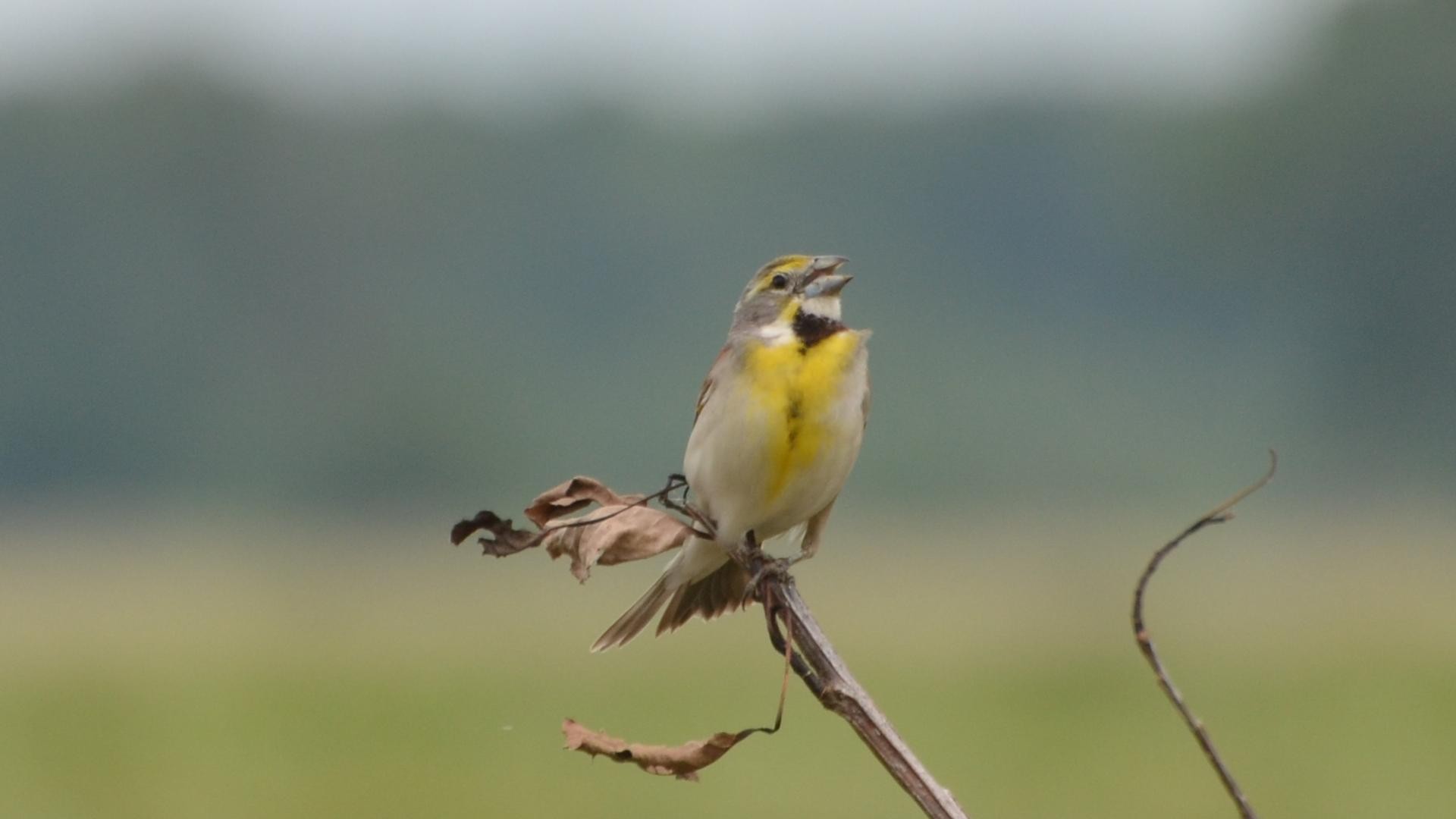Dickcissel
A species of Dickcissels, Also known as Townsend's Bunting Scientific name : Spiza americana Genus : Dickcissels
Dickcissel, A species of Dickcissels
Also known as:
Townsend's Bunting
Botanical name: Spiza americana
Genus: Dickcissels
Content
Description General Info
 Photo By Andy Reago & Chrissy McClarren , used under CC-BY-2.0 /Cropped and compressed from original
Photo By Andy Reago & Chrissy McClarren , used under CC-BY-2.0 /Cropped and compressed from original Description
Dickcissels have a large, pale bill, a yellow line over the eyes, brownish upperparts with black streaks on the back, dark wings, a rust patch on the shoulders, and light underparts. Adult males have a black throat patch, a yellow breast, and grey cheeks and crown. This head and breast pattern is especially brilliant in the breeding plumage, making it resemble an eastern meadowlark. Females and juveniles are brownish on the cheeks and crown, and are somewhat similar in appearance to house sparrows; they have streaked flanks. In flight, they make a low, "electric", buzzing fpppt. From an open perch in a field, this bird's song is a sharp dick dick followed by a buzzed cissel, also transcribed as skee-dlees chis chis chis or dick dick ciss ciss ciss. Measurements: Length: 5.5-6.3 in (14-16 cm) Weight: 0.9-1.4 oz (25.6-38.4 g) Wingspan: 9.8-10.2 in (24.8-26 cm) 
Size
15-18 cm (6-7 in)
Colors
Brown
Black
Yellow
Red
Gray
White
Life Expectancy
4 years
Nest Placement
Shrub
Clutch Size
3 - 6 eggs
Incubation Period
1 - 2 broods
Number of Broods
12 - 13 days
Nestling Period
8 - 10 days
Feeding Habits
Dickcissel's diet varies seasonally; they consume insects and spiders during breeding and almost exclusively seeds while migrating or in winter. Feeding primarily on the ground, dickcissel forage in flocks post-nesting, consuming grasses and crops like rice and sorghum, showcasing a high seed-hulling speed, with males being faster.
Habitat
Dickcissel predominantly inhabit open and sprawling grassland ecosystems. They show a preference for native prairies, restored grasslands, pastures, and agricultural terrains such as hayfields. They adapt well across various altitudes and climates, from fence rows to roadsides. Dickcissel are also found in crop fields and brushy areas for foraging and resting, respectively. At night, they seek roost sites within densely vegetated marshes or tall grasslands, indicating a necessity for diverse microhabitats within their range.
Nest Behavior
Dickcissel typically engage in nest building, egg-laying, and chick-rearing during the breeding season. The female alone constructs the nest and incubates the eggs, with the male sometimes assisting in feeding the young once hatched.
Nest Characteristics
Dickcissel nests are typically situated near the ground within dense grasses and sedges or, less commonly, up to 10 feet above ground amid woody vegetation. Their bulky cup-shaped nests are constructed from weeds and grasses, with interiors lined with fine grass and occasionally hair.
Dite type
Granivorous
General Info
Feeding Habits
Bird food type
Bird Feeder Type

Platform
Sounds
Song
Recording location: United States
Song
Recording location: United States
Behavior
Dickcissel exhibit a mix of solitary and social behaviors depending on the season. During the breeding season, males aggressively defend their territories, engaging in confrontations and ground fights with intruders, and are polygynous with the potential to attract multiple mates based on the quality of their habitat. After securing a mate, males become attentive partners but do not assist in parenting. Contrastingly, outside the breeding season, dickcissel display highly gregarious behavior, forming colossal flocks that can reach millions in number, generally staying put at a single winter roost site.
Distribution Area
Their breeding habitat is fields in midwestern North America. Following the breeding season the species migrates in large flocks to southern Mexico, Central America, and northern South America. They may occur as vagrants well outside of their normal range. From 1966-2015 the dickcissel experienced a greater than 1.5% population reduction in the northern part of its breeding range and throughout the Midwestern United States. 
Species Status
Not globally threatened.

 Photo By Andy Reago & Chrissy McClarren , used under CC-BY-2.0 /Cropped and compressed from original
Photo By Andy Reago & Chrissy McClarren , used under CC-BY-2.0 /Cropped and compressed from original Scientific Classification
Phylum
Chordates Class
Birds Order
Perching birds Family
Cardinals Genus
Dickcissels Species
Dickcissel